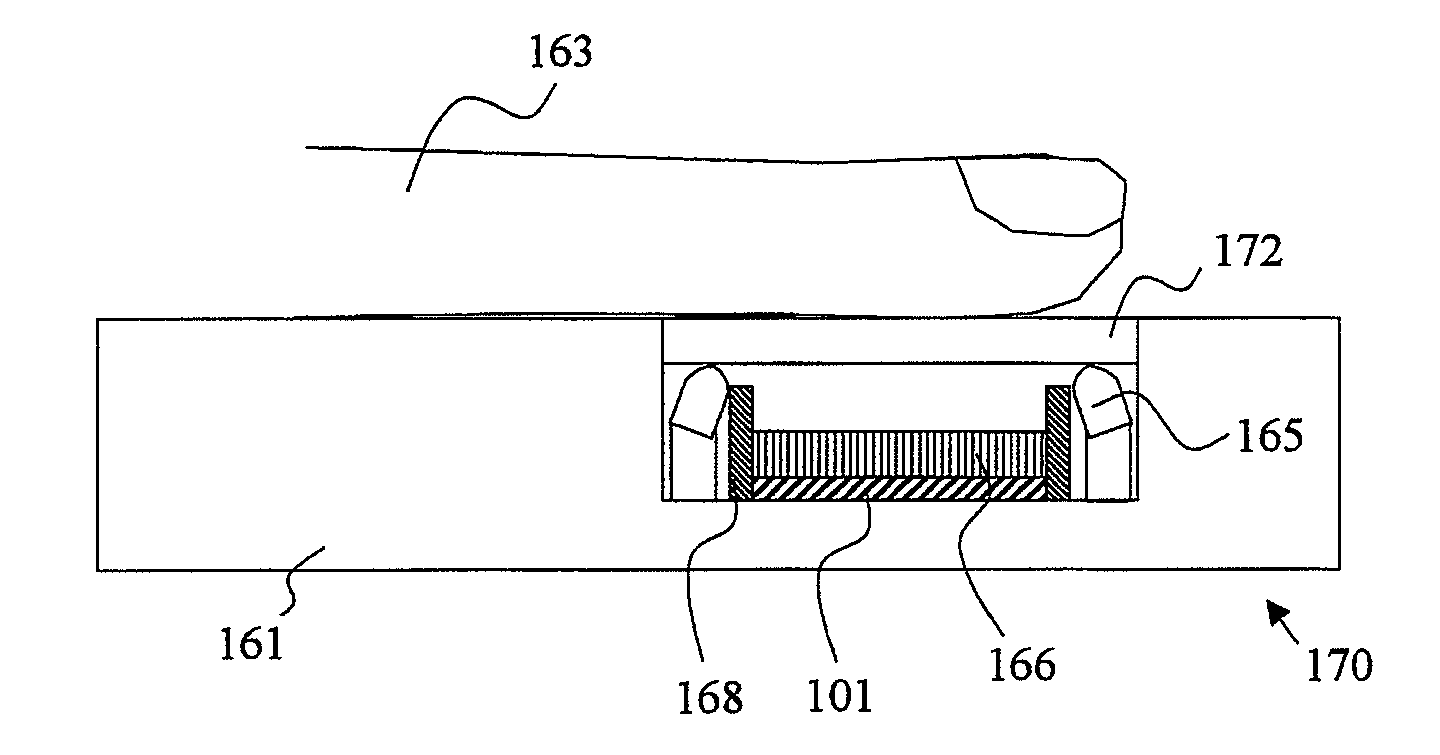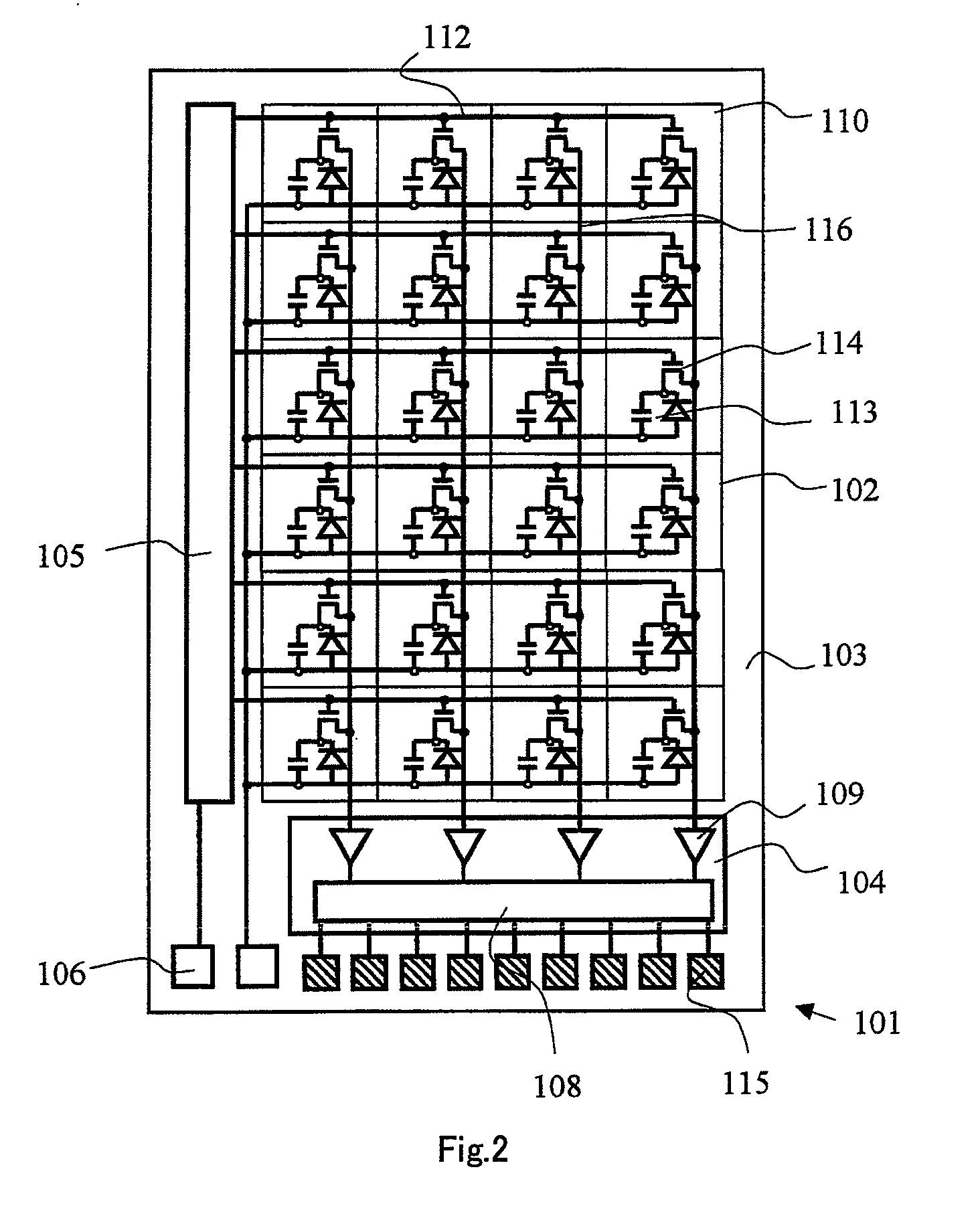Solid-state imaging element, photo-detector and authentication system using the photo-detector
a technology of solid-state imaging and authentication system, which is applied in the field photodetector and authentication system using the photodetector, can solve the problems of insufficient improvement in detection sensitivity, and conventional methods have limitations in obtaining higher sensitivity, so as to improve detection efficiency for visible light or near-infrared light, the detection sensitivity of solid-state imaging element can be improved, and the cross-talk between pixels can
- Summary
- Abstract
- Description
- Claims
- Application Information
AI Technical Summary
Benefits of technology
Problems solved by technology
Method used
Image
Examples
first embodiment
[0061]The structure of the solid-state imaging element 110 of the present invention according to the first embodiment is shown in FIG. 3. FIG. 3 shows a sectional view of the solid-state imaging element shown in FIG. 1 along the sectional line A. In the drawing, the upper side is the side for receiving incident photons 132, and width 126 is the width of one solid-state imaging element 110. This solid-state imaging element 110 has a structure where a reflecting layer (second reflecting layer) 120, a transparent layer 136, a photoelectric conversion element 135, a reflecting layer (first reflecting layer) 121 and a microlens 122 are formed on a substrate 103, the second reflecting layer 120 and the first reflecting layer 121 sandwich the adjacent transparent layer 136 and photoelectric conversion element 135, and further the microlens 122 is disposed on the first reflecting layer 121.
[0062]Further, in the example shown in FIG. 3, the reflecting layer 120 is adhered to the substrate 10...
second embodiment
[0093]The photo-detector of the present invention according to the second embodiment will be explained with reference to FIG. 7. In FIG. 7, the same elements as those of the first embodiment are indicated with the same symbols (the same shall apply to the following drawings).
[0094]In the photo-detector of this embodiment, the shape of the second reflecting layer 120 differs from that of the second reflecting layer 120 of the first embodiment. The other configurations are the same as those of the first embodiment. That is, the second reflecting layer 120 of this embodiment has a plurality of convexes and concaves on the reflecting surface as shown in FIG. 7. When it reflects the incident photons 132, it can thereby reflect them with a large amount of horizontal components, in other words, it can reflect them with a large reflection angle. This makes it possible to reflect photons which entered from the light entrance window 128 to the first reflecting layer 121, and therefore the amo...
third embodiment
[0103]The photo-detector of the present invention according to the third embodiment will explained below with reference to FIG. 8.
[0104]In the photo-detector of this embodiment, the shape of the second reflecting layer 120 differs from those of the first and second embodiments. The other configurations are the same as those of the first embodiment. That is, as shown in FIG. 8, the reflecting surface of the second reflecting layer 120 of this embodiment inclines. Incident photons are reflected by this reflecting surface to the first reflecting layer 121 on one side of the light entrance window 128.
[0105]Inclination of the reflecting surface for efficiently reflecting photons which entered from the light entrance window 128 to the first reflecting layer 121 will be explained. Here, in order to simplify the explanation, it is assumed that there shall be no refraction of light at the interfaces of the layers.
[0106]Also in this case, the inclination of the reflecting surface is designed ...
PUM
 Login to View More
Login to View More Abstract
Description
Claims
Application Information
 Login to View More
Login to View More - R&D
- Intellectual Property
- Life Sciences
- Materials
- Tech Scout
- Unparalleled Data Quality
- Higher Quality Content
- 60% Fewer Hallucinations
Browse by: Latest US Patents, China's latest patents, Technical Efficacy Thesaurus, Application Domain, Technology Topic, Popular Technical Reports.
© 2025 PatSnap. All rights reserved.Legal|Privacy policy|Modern Slavery Act Transparency Statement|Sitemap|About US| Contact US: help@patsnap.com



